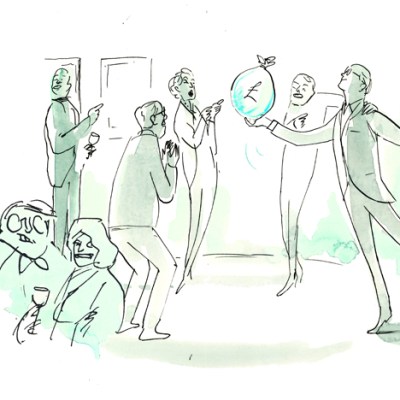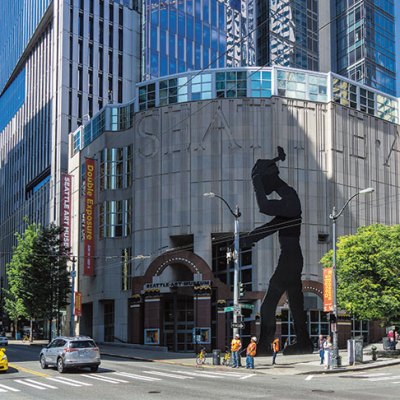In January federal museums were forced to close during the partial shutdown of the US government – the longest in history. Is there anything they can do to protect themselves from the consequences in future?
Maxwell L. Anderson
Shutdowns of the federal government in the United States are frequent: since 1976 there have been a total of 10 involving furloughed staff. Lasting 35 days, January’s was the longest and most consequential instance. Countless tourists arriving in Washington, D.C., were unable to access the treasures of the sprawling Smithsonian Institution. Up to 30 million tourists visit Smithsonian facilities annually, so a month-long shutdown takes a toll on the finances of each unit, estimated by Smithsonian Secretary David J. Skorton to be $1 million of lost revenue a week. Encompassing 19 museums, galleries, gardens, and a zoo, the Smithsonian includes the CooperHewitt Museum and the American Indian Museum’s George Gustav Heye Center in New York. Beyond the Smithsonian, hundreds of museums, national parks, forests, monuments, and historic sites temporarily closed as well.
At the Smithsonian, as word of a likely shutdown date spreads, conference calls include the directors of all units and galleries. They prepare lists of essential personnel from among 4,000 employees to be furloughed, including guards, whose complement remains largely intact thanks to a mix of full-time and contract labour. Next comes a calculation of all ‘carry-forward’ funds from the previous fiscal year – funds that have not been spent in the course of business. The dollars from all Smithsonian entities are pooled and collegially reallocated in proportion to the operating expenses of each unit and gallery. Museums are not allowed to tuck resources away in a contingency budget beforehand.
The leaders of each unit refrain from allocating funds for any expense beyond the bare-bones requirements to stay open. There ensues a so-called orderly shutdown, whereby staff with ‘accepted status’ clock in for four instead of eight hours a day to extend the payroll pool. There are exceptions: staff may de-install, pack, and ship exhibitions contractually obligated to move to a subsequent venue.
Furloughed staff may not answer the phone, emails, or other correspondence. Nor may they attend events where they might ‘work’ – i.e. be drawn into a conversation touching on a professional issue. A web-based resource bearing ‘Smithsonian Alerts’ tracks developments affecting their eventual return. Meanwhile, scientists halt experiments, events are cancelled, and orders suspended. The effect on the income of neighbouring businesses, tourist-related enterprises, and vendors is incalculable.
As word spreads of potential authorisation to reopen, the directors agree on a day when all facilities can reopen at the same time. The challenges awaiting returning staff are many. Contractors cannot recoup foregone earnings. The biggest burden falls on custodial staff required to clean millions of square feet of facilities that have been left untended.
Works of art with electrical components need to be started up again. Piled-up correspondence, deferred maintenance, and missed deadlines are only the most visible features of an unexpected hiatus. The smooth functioning of bureaucracies demands predictability, and the deficit in morale for stewards of cultural institutions extends past the sting of late fees on credit card, car, and mortgage payments. It also diminishes everyone’s motivation, and invites thoughts of a job or career change, with lasting damage to the nation’s cultural enterprises.
The plight of federal workers and visitors in a shutdown is thus largely beyond the control of professionals. What’s needed is an amendment to the Antideficiency Act to protect the continuous operation of federally funded cultural and natural facilities and sites, and the passage of a bipartisan bill currently before Congress entitled the Comprehensive Resources for Entrepreneurs in the Arts to Transform the Economy (CREATE) Act, S. 661 and H.R. 1649. Legislative protection is the only safeguard to prevent the folly of future shutdowns from affecting America’s gigantic cultural sector.
Maxwell L. Anderson is the president of the Souls Grown Deep Foundation and a former president of the Association of Art Museum Directors.
Illustration by Graham Roumieu/Dutch Uncle

Kriston Capps
As January drew to a close with no end in sight to the conflict that forced a partial federal government shutdown in the United States, museum administrators in Washington, D.C. began to sweat. Exhibits were coming to an end with no viewers to see them off. Shows such as ‘Tintoretto’ at the National Gallery of Art were creeping up on the calendar with no staff to put them in place.
The logistical nightmares were and are only inconveniences, however, compared with the material harm suffered by some museum staff. Between now and the next shutdown – whether that’s in days or years – federal museums should prepare to protect their staff and contract workers from bearing the brunt of deadlock in Washington.
Furloughed staff missed pay cheques stretching over two salary periods. Since nearly four out of five workers in America report that they live pay cheque to pay cheque, the situation was unsustainable for hundreds of thousands of people. In museums, those hit hardest were the workers paid the least: security guards, janitors, food service workers, and retail employees.
In a video captured by the Washington Post, a tearful Faye Smith, a security guard at the Hirshhorn Museum and Sculpture Garden, stated during a protest at the office of Senate majority leader Mitch McConnell that she would be evicted if she could not pay her rent on 1 February. Relying on family was not practical. Fortunately, President Donald Trump blinked, signing a budget with leaders in Congress with no money for the border wall he desires. But non-salaried contract workers like Smith will not be repaid any lost wages, while others will receive back pay.
Museum workers should not pay the price for clashes between the White House and the Capitol. At the Hirshhorn, which extended a show of paintings by Charline von Heyl cut short by a month due to the shutdown, many top curators’ and administrators’ salaries are paid through a trust, not directly from federal funds. During the shutdown, trust employees across the Smithsonian Institution continued performing their duties as researchers or curators – or at least, the parts of their jobs they could conduct while sitting on the couch. There’s nothing preventing the Smithsonian from arranging for its trust to pay for the salaries of its most vulnerable workers instead of those of the most highly compensated.
Trust positions are unique to the Smithsonian; the National Gallery of Art, which relies to a greater degree on federal funds to pay staff, was entirely shuttered over the duration. But the paintings in the Tintoretto exhibition just about to open were never in danger: registrars and handlers tasked with receiving artworks were deemed essential or ‘excepted’ and allowed to work, albeit without pay. Furloughed staff are now being repaid for the time they would have worked. The same standard should apply to contract cafeteria workers and gift-store clerks.
With Smith by her side, Eleanor Holmes Norton, the non-voting delegate for Washington, D.C., is appealing to her colleagues in Congress to support a bill that would ensure that contract workers receive at least some back pay for missed work. In the future, if the federal government can’t or won’t compensate all its low-wage workers in the event of a gap in pay, then museums should; and if museums can’t or won’t repay contractors, then they shouldn’t be relying on them in the first place.
Carpenters and painters are already hard at work to prepare the National Gallery’s halls for the crowds eager to see ‘Tintoretto’. Preparations for delayed shows in D.C. are slowly underway again; staffers and executives who have climbed out of one mountain of emails are preparing for the prospect of another. But there’s little that low-wage workers – already stretched thin and no doubt set back financially as a result of the month-long shutdown – are able to do to prepare for another harsh winter spell. The White House may have decided on a strategy of punishing federal workers to get its way, but leaders at federal museums must do their part to protect both their collections and their workers whenever politicians fail.
Kriston Capps writes about art, architecture and urbanism. He lives in Washington, D.C.
From the March 2019 issue of Apollo. Preview and subscribe here.



